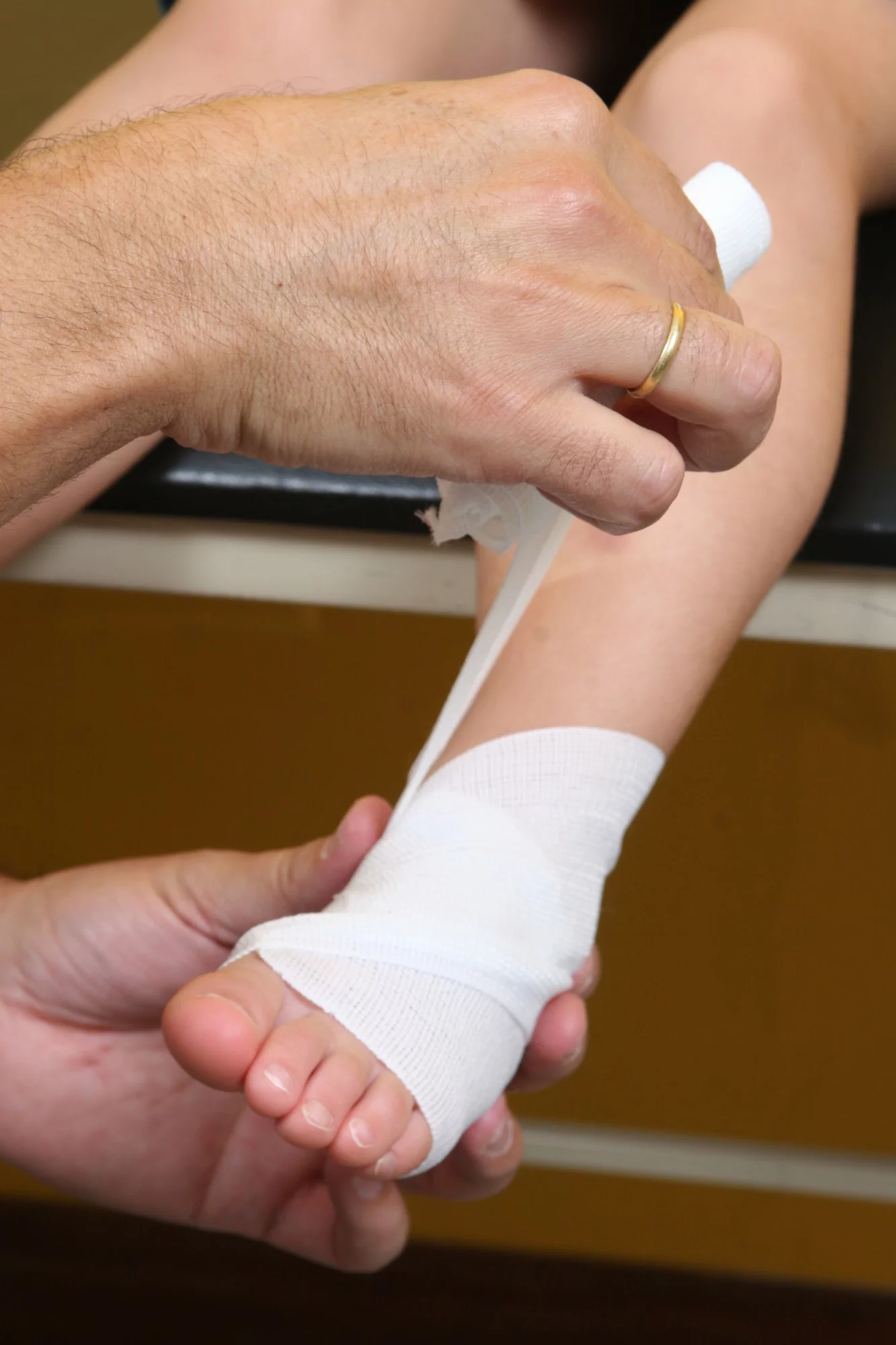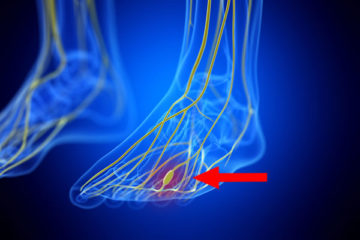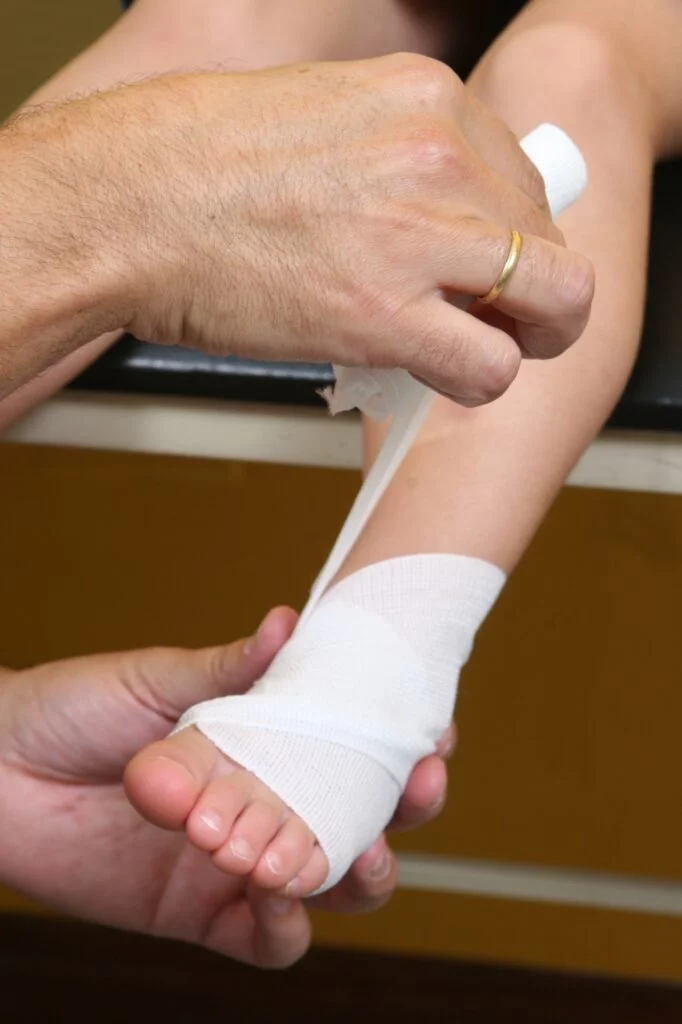Table of Contents
What Is a Neuroma?
A neuroma is a thickening of nerve tissue that may develop in various parts of the body. The most common neuroma in the foot is called a Morton’s neuroma, which typically occurs between the third and fourth metatarsal bones. It is also referred to as an intermetatarsal neuroma. Intermetatarsal describes its location in the ball of the foot between the metatarsal bones. Neuromas may also occur in other locations in the foot, but for sake of this post, we will focus on the Morton’s neuroma.
The thickening of the nerve that characterizes a neuroma is the result of compression and irritation of the nerve which creates symptoms of Morton’s neuroma. In rare cases, this may lead to permanent nerve damage.
Anything that causes compression or irritation of the nerve can lead to the development of a neuroma. One of the most common offenders are shoes that have a narrowed toe box or high-heeled shoes that cause the toes to be jammed into the toe box. People with certain foot deformities: bunions, hammertoes, flatfeet or more flexible feet, are at higher risk for developing a neuroma. Other potential causes are activities that involve repetitive irritation to the ball of the foot, such as running or court sports. An injury or other type of trauma to the foot may also lead to a neuroma.
Symptoms
If you have a Morton’s neuroma, you may have one or more of these symptoms where the nerve damage is occurring:
- Tingling, burning or numbness
- Pain
- A feeling that something is inside the ball of the foot (especially common in between the 3rd and 4th metatarsals/ toes)
- A feeling that there is something in the shoe or a sock is bunched up under the toes
The progression of a Morton’s neuroma often follows this pattern:
- The symptoms begin gradually. At first, they occur only occasionally when wearing narrow-toed shoes or performing certain activities.
- The symptoms may go away temporarily by removing the shoe, massaging the foot or avoiding aggravating shoes or activities.
- Over time, the symptoms progressively worsen and may persist for several days or weeks.
- The symptoms become more intense as the neuroma enlarges and the temporary changes in the nerve become permanent.
Diagnosis
To arrive at a diagnosis, we will obtain a thorough history of your symptoms and examine your foot. During the physical examination, the doctor attempts to reproduce your symptoms by manipulating your foot. Other tests or imaging, such as Sonography (Ultrasound) or MRI (magnetic resonance imaging) studies may be performed.
It’s advised to come see us early in the development of symptoms, but most people do not. Early diagnosis of a Morton’s neuroma greatly lessens the need for more invasive treatments and may help you avoid surgery.
Nonsurgical Treatment
For mild to moderate neuromas, treatment options may include:
- Padding. Padding techniques provide support for the metatarsal heads, thereby lessening the pressure on the nerve and decreasing the compression when walking.
- Icing. Placing an icepack on the affected area helps reduce pain and swelling.
- Orthotic devices. Custom orthotic devices provided by your doctor provide the support needed to reduce pressure and compression on the nerve.
- Activity modifications. Activities that put repetitive pressure on the neuroma should be avoided until the condition improves.
- Shoe modifications. Wear stable shoes with a wider toe box. Avoid narrow-toed shoes or high heels.
- Medications. Oral nonsteroidal anti-inflammatory drugs (NSAIDs), such as ibuprofen, may be recommended to reduce pain and inflammation.
Injection therapy.
Treatment may include injections of corticosteroids, local anesthetics or other medications
Surgery
Surgery may be considered in patients who have not responded to nonsurgical treatments. The doctors at California Foot and Ankle Institute will determine the approach that is best for your condition. The length of the recovery period will vary depending on the procedure performed. As a general rule, if surgery is the plan, we make every possible effort to minimize incisions, scars, swelling, and pain.
Regardless of whether you have undergone surgical or nonsurgical treatment, your doctor will recommend long-term measures to help keep your symptoms from returning. These include appropriate footwear and modification of activities to reduce the repetitive pressure on the foot.



